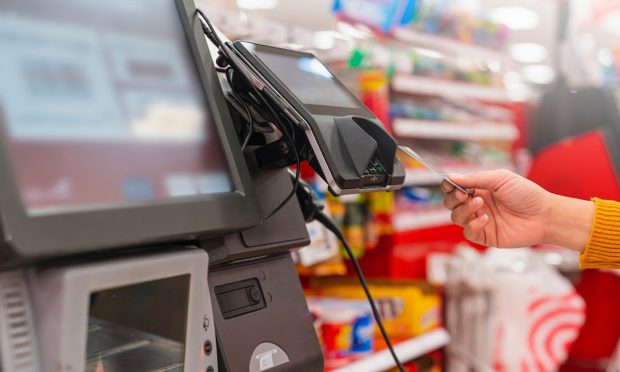Grocers Tap Self-Service to Save Labor Across Supply Chain

In the face of today’s labor challenges, grocers are increasingly embracing self-service technologies to maximize efficiency every step of the way. Take Ahold Delhaize’s subsidiary The GIANT Company, for instance, which announced on Thursday (Dec. 16) that it is adding a small-format store equipped with frictionless checkout technology at its new automation-powered eCommerce fulfillment center in Philadelphia.
Employees at the facility scan in, pick up their items and walk out, in the style popularized by Amazon’s “Just Walk Out” technology. For the grocer, this saves on labor — not only by keeping employees within the facility for their food breaks, but also by making their shopping trips quicker.
“Following the successful implementation of this frictionless technology at our perishable distribution center in Carlisle, Pennsylvania, we’re excited to offer it to our team members at our GIANT Direct eCommerce fulfillment center in Philadelphia,” Glennis Harris, senior vice president of customer experience at The GIANT Company, said in a statement. “We know our team members will appreciate the broad assortment of snacks, meals, beverages and more, conveniently available day or night, without ever having to leave the building.”
Technologies such as these provide shoppers with exactly what they are looking for from self-service options — speed and convenience. Research from PYMNTS’ study “Today’s Self-Service Shopping Journey: The New Retail Expectation,” created in collaboration with Toshiba, which surveyed more than 2,000 U.S. adults about their checkout behaviors, shows that the No. 1 reason consumers opt for self-checkout is that they are looking for a quicker purchasing experience, and the second most popular reason is that they do not want to wait in line.
See also: Consumers Want Self-Service Checkout Options, But Rarely Get to Use Them
Nineteen percent of those surveyed cited social distancing as a motivator to use self-checkout. However, it is notable that the study was conducted in mid-May, when the vaccine rollout contributed to a sense of optimism about the progress of the pandemic. With the rapid rise in cases in recent weeks and the renewed air of uncertainty, it is likely that the share of consumers seeking out more socially distant ways to move through the grocery store could be on the rise.
“It’s clear that users prefer to have a contactless experience,” Ariel Shemesh, co-founder and CEO of retail computer vision provider KanduAI, told PYMNTS in an interview, reflecting on the changes that have happened in the space since the start of the pandemic. “Self-checkout definitely got a lot of users who used to go to the cashiers, and they didn’t really mind waiting in line, but they got acquainted with this technology and now they basically demand it.”
Related news: 3 Friction Points Slowing the Adoption of Self-Checkout for Grocers
There is a huge amount of untapped demand for self-service — the study found that the most popular reason consumers cite for having used traditional manned checkout lanes is that it was the only option available.
Last month, it was reported that Albertsons Companies, the Boise, Idaho-based grocery giant that encompasses more than 20 popular supermarket chains across 34 states, was trying out smart shopping carts, allowing consumers to scan items and pay as they go, at a Safeway location in Pleasanton, California and at an Albertsons in Eagle, Idaho.
You may also like: Grocers Try Smart Carts to Reduce Labor Costs, Shift Checkout to Consumers
In addition to easing grocers’ labor challenges and removing friction for consumers, smart carts and computer vision-powered self-checkout tools also allow grocers to gain valuable insight into how consumers move through stores and interact with products.
“This is what the next generation of the in-store journey should look like,” Raz Golan, CEO and co-founder of grocery store technology company Shopic, told PYMNTS in an interview. “All these data points are ones that we just couldn’t measure very well until today, and it opens a whole new world of data analytics.”
Read more: Smart Carts Bring Data Analytics Into Grocery Aisles
